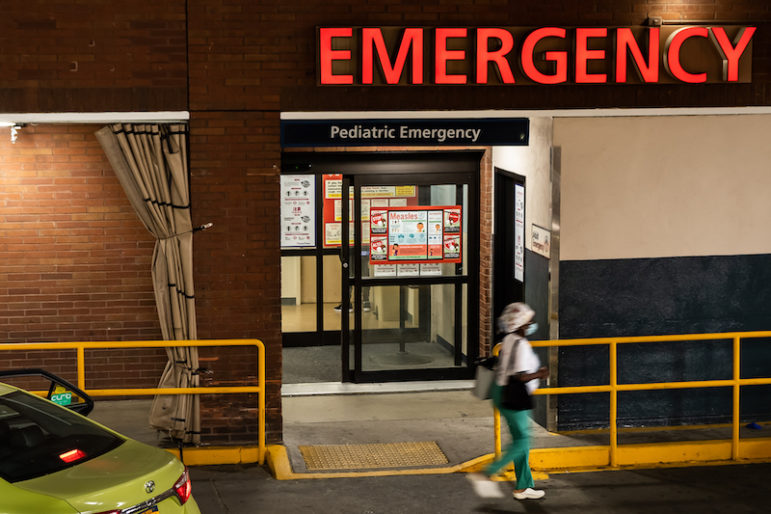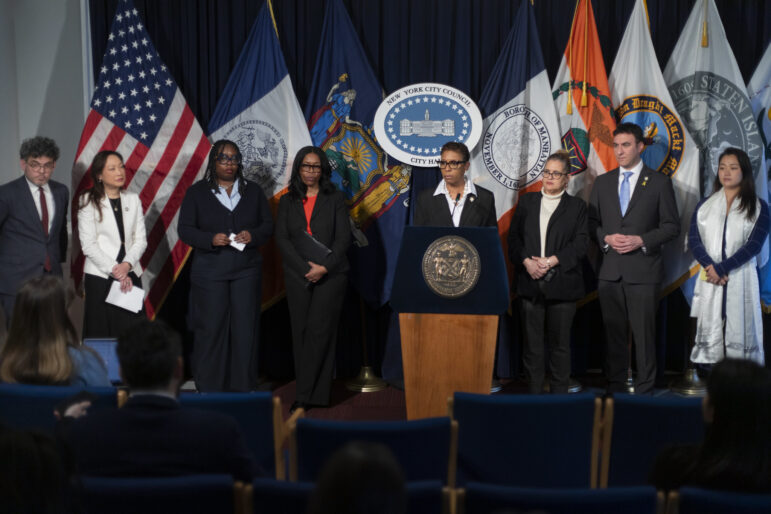
Photo by: Marc Fader
Norman Thomas High School M620 on East 33rd Street in Manhattan, one of 19 schools the New York City Department of Education planned to close this year before a judge stopped them.
The New York City Department of Education has, since 2002, closed 91 New York City public schools. This year, its plan to shutter an additional 19 schools was approved at 3 a.m. on January 26 by the Panel for Education policy after a rowdy public hearing—only to be overturned on March 26 by a state court.
It’s uncertain whether higher courts might reinstate the closures. In the meantime, parents, school staff and leaders, and education advocates are pushing for the Department of Education (DOE) to consider methods to help struggling schools improve, rather than simply closing them down.
One such strategy, the School Transformation Zone or STZ, is gaining wide support across a broad swath of elected officials, education experts, youth advocates and religious leaders.
Developed by the Coalition for Educational Justice, a parent-led school reform coalition, the Zone would integrate proven school-improvement strategies with strong leadership—”an educator with a track record for improving low-performing schools”—and the oversight of a Zone Coordinating Committee, drawn from key local stakeholders, like members of each school’s School Leadership Team.
The CEJ has a strong track record of productive collaboration with the DOE. It has won grants of nearly $30 million for its Middle School Success Initiative targeting reform in low-performing middle schools. The affiliated Brooklyn-based Brooklyn Education Collaborative secured a $444 million commitment from DOE for science labs in city middle and high schools and in the Bronx, the Community Collaborative to Improve Bronx Schools created a signature “Lead Teacher” teacher-training program that has placed master mentor teachers in over 100 public schools citywide.
The School Transformation Zone mandates the use of strategies like an extended school day and longer school year; rich, college-preparatory curriculum; and strong professional support for teachers and principals, with robust parent involvement.
Based in part on former New York City Chancellor Rudy Crew’s “Chancellor’s District,” created in 1996 to support the renewal and growth of struggling schools, the School Transformation Zone would function as a kind of “community incubator” to grow stronger schools: Schools that became part of the Zone would have three years to develop and improve academic outcomes before the possibility of closure.
Additionally, the CEJ proposes that all city schools receiving Federal funds through School Improvement Grants would participate in the Zone, and recommends that DOE apply for federal Innovation Funds to support the Zone’s struggling schools. (On April 30th, the U.S. Department of Education announced that New York State will receive over $308 million in School Improvement Grants, to be directed toward 57 “persistently failing” schools, including 34 schools in New York City.)
Under Crew, schools in the Chancellor’s District received extra resources directed at decreasing class size, longer school days, and academic tutoring, enrichment and professional-development support for teachers and principals. Students in the Chancellor’s District made substantial gains, according to a 2004 report by NYU’s Steinhardt Institute for Education and Social Policy, significantly outstripping students in less-challenged schools. (The Chancellor’s District was disbanded in 2003 as part of the Department of Education restructuring that consolidated districts into regions.) Crew later established a similar initiative in Miami, which led to gains by 90 percent of that city’s schools.
Currently, DOE efforts to support struggling schools prior to closing can include changing a school’s structure, bringing in different leadership and supporting curriculum reform, according to DOE officials. But as Deputy Chancellor John White explained in a City Council hearing in March, DOE believes that when schools are truly failing, they must close, even when there is strong community desire to keep a beloved school open.
City Council Education Committee Chair Robert Jackson and 18 City Council members have co-sponsored a resolution urging DOE to adopt the School Transformation Zone model to turn around failing schools, stressing the value of a longer school day.
“I believe that closing schools should be the last resort,” Jackson said at a Council hearing on May 5. “School closures displace many of the students most at risk,” increasing the chances of dropping out, he added. “There is a ‘domino effect,’ from school closings,” Jackson continued, “leading to surrounding schools becoming overcrowded, then being targeted for closure themselves.” Adopting a model to save troubled schools will, he said, “fix low-performing schools, rather than close them.”
The concerns Jackson mentioned—along with complaints about the lack of community input—have been raised for years by opponents of the closings. The recent lawsuit by the United Federation of Teachers, the local NAACP chapter and other plaintiffs that has, at least temporarily, delayed the current round of school closings argued that the DOE’s process for closing schools failed to include procedures outlined in state law.
The STZ proposal would also impose a moratorium on school closings and co-locations, which site multiple schools in single school buildings or ‘educational campuses.’ While the DOE’s decision to close failing schools has been overturned by the court, its co-location efforts continue: The Panel for Education Policy, which serves at the appointment of the borough presidents and Mayor Bloomberg, who appoints most members and the chair, voted on May 5th to approve three new co-locations for the coming academic year.
Asked to comment on the CEJ proposal, DOE spokesman Jack Zarin-Rosenfeld said: “President Obama agrees that in order to prepare all of our children for college and the workplace, it is critical that we turnaround our lowest performing schools. This includes, in some cases, transformation, as laid out in the Race to the Top competition. We will continue to engage parents and community leaders as we work to transform our lowest performing schools, win federal dollars for our students, and build on the progress we’ve made in improving student outcomes.”








